|
Kensington’s Historic Trees Under Threat
By Maggie McCann
March/April 2023
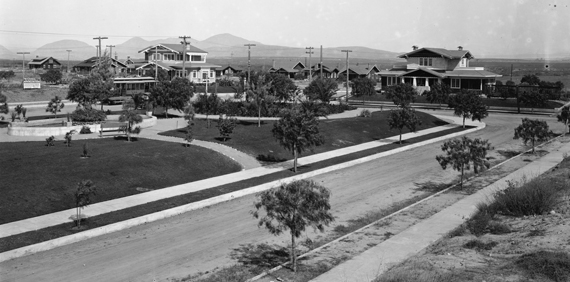 Tree advocates in Kensington studied this 1913 photo and were able to identify some still living trees that were original to Kensington Park.
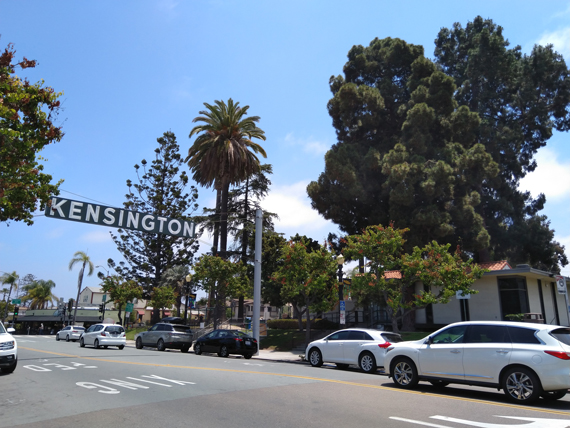 People entering Kensington see a very large hoop pine on the right in Library Park. |
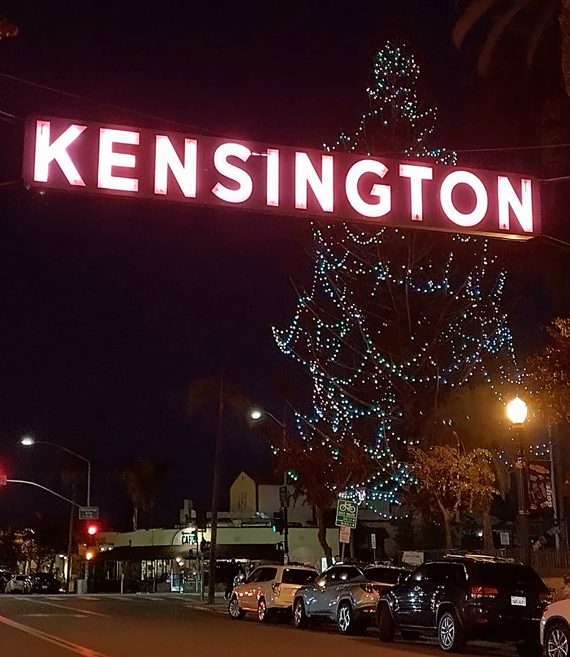 Kensington celebrates its huge hoop pine by lighting it up every December. |
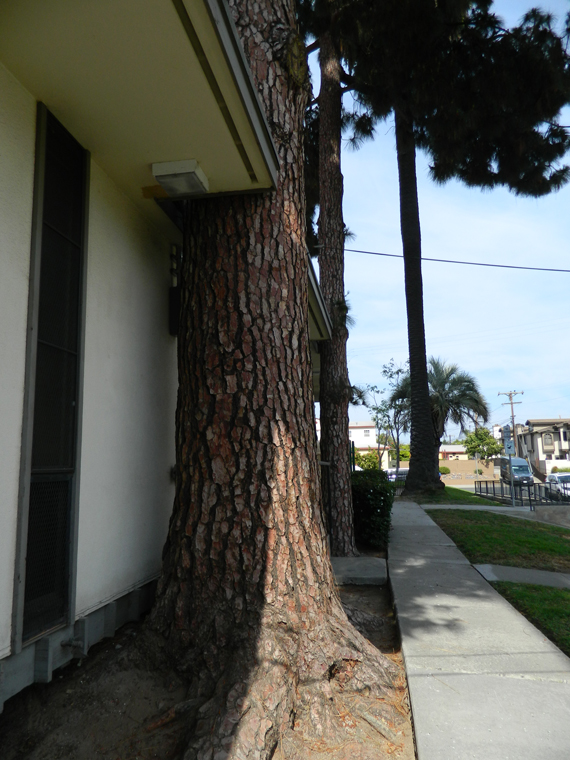 Architect Richard Lareau designed the early 1960s library with cutouts in the eaves to accommodate two historic Canary Island pines. |
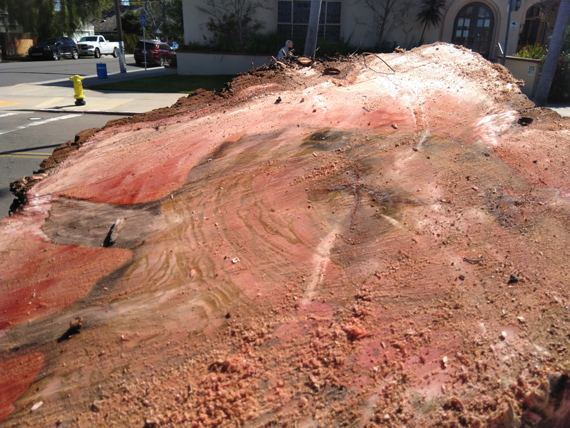 Painful to look at and live with, this large stump is all that remains of a grand Kensington tree that lived for more than a century. All photos courtesy Maggie McCann |
After ill-conceived actions by the City of San Diego, Kensington’s parkways still retain 30 of the original California pepper trees planted when the subdivision was mapped in 1910. When neighbors first proposed that the City designate the trees under Council Policy 900-19’s Conserve-a-Tree program as heritage trees, 37 trees were alive and doing fine. The City has since suspended the program, claiming that having trees designated as historic would cause them California Environmental Quality Act (CEQA) problems. As if that’s a bad thing.
In addition to the pepper trees, Kensington still has nine original trees in the park surrounding the Kensington-Normal Heights Library on Adams Avenue. These trees were also planted in 1910 by the developers of Kensington Park. In 1962, some of the original trees were removed to make way for a larger library building, but the San Diego architect, Richard Lareau, left cutouts in the roofline to accommodate two of the Canary Island pines. Besides the pines, the surviving park trees from 1910 include Canary Island palms, deodar cedar, Catalina Island cherry, and a very tall hoop pine on the corner, which is lit every December for the holiday season. All of these trees were designated as heritage trees in 2009 by the City’s Community Forest Advisory Board.
The palette of trees the developers chose reflects the choices made by New York-based landscape architect Samuel Parsons Jr., who was recruited by George Marston and selected to design San Diego’s City Park (now Balboa Park) by the City’s Board of Trustees. Parsons, with his partner, George D. Cooke, worked out plans beginning around 1902 for the improvement of City Park, and was again called on in 1910 by the Panama-California Exposition Company to advise on the landscape for the site of the upcoming 1915 exposition.
Mr. Parsons was described as “an earnest advocate of the propagation of the pepper tree.” He expressed his idea of appropriate trees: “A few of these which seem to me to be both beautiful and hardy are two or three species of eucalyptus and pepper trees, three or four acacias, casuarinas, sumachs, Canary pines, muricata pines, Arizona cypress, Guadalupe cypress, and cedrus deodara.” As the same group behind the 1915 exposition was also involved in Kensington Park’s development, it’s no wonder that much of Parsons’ palette was used in Kensington. It’s a testament to his knowledge of trees that Kensington retains the charm and benefit of his tree wisdom.
Editor’s note: The City of San Diego is not the only municipality where citizens are contesting vast tree removals for reasons of natural beauty, heritage, and environmental benefits, such as cooling shade and the absorption of greenhouse gases. The Nature Conservancy lists six compelling reasons to retain and plant more trees, which you can read online at 6 Ways Trees Benefit All of Us.
And a Los Angeles judge recently ruled in favor of Angelenos for Trees, who sued the City over plans to chop down as many as 13,000 trees to repair sidewalks. The citizens group argued that sidewalks can be fixed while preserving shade and greenery. The Superior Court judge agreed, calling the City’s program “fundamentally flawed.” You can read more about this at Judge halts LA plan to destroy trees for sidewalk repairs.
|
2025
2024
2023
2022
2021
2020
2019
2018
2017
2016
2015
|








